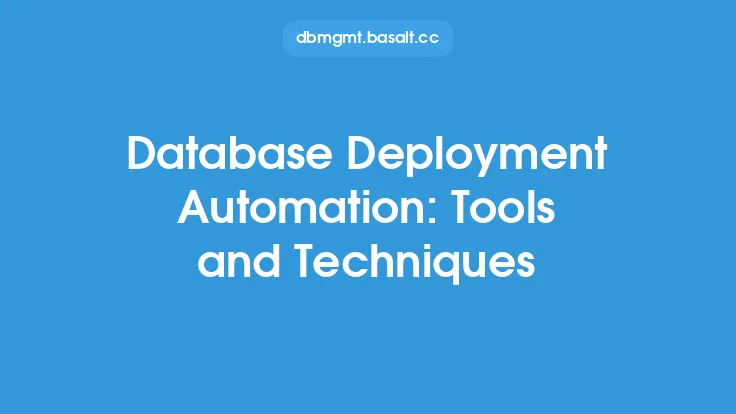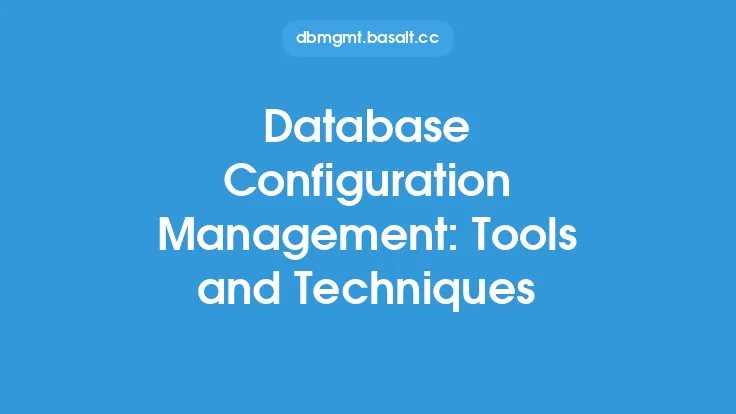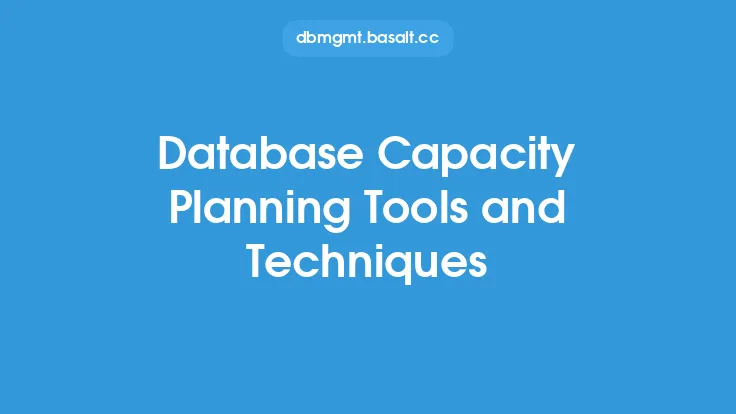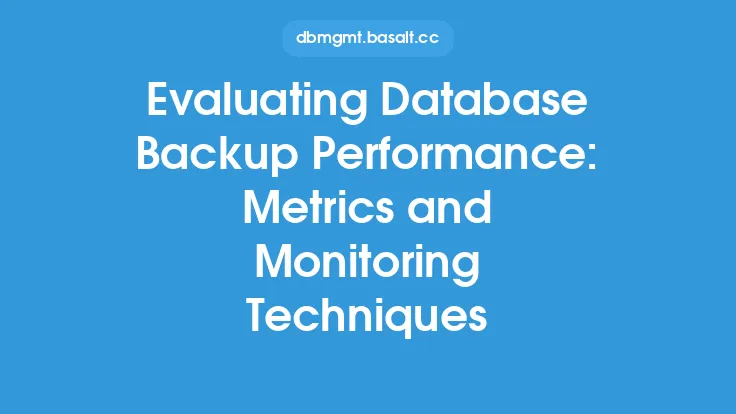Database performance optimization is a critical aspect of ensuring the overall health and efficiency of a database. One of the key components of database performance optimization is monitoring, which involves tracking and analyzing various database metrics to identify areas of improvement. Database monitoring tools and techniques play a vital role in this process, providing database administrators with the insights they need to optimize database performance, improve reliability, and reduce downtime.
Introduction to Database Monitoring
Database monitoring involves the use of various tools and techniques to track and analyze database performance metrics, such as query execution time, disk usage, memory usage, and network traffic. The goal of database monitoring is to identify areas of improvement, detect potential issues before they become critical, and optimize database performance for better reliability and efficiency. Database monitoring tools and techniques can be broadly categorized into two types: proactive and reactive. Proactive monitoring involves continuously tracking database performance metrics to identify potential issues before they occur, while reactive monitoring involves responding to issues as they arise.
Types of Database Monitoring Tools
There are several types of database monitoring tools available, each with its own strengths and weaknesses. Some of the most common types of database monitoring tools include:
- Native monitoring tools: These are built-in tools that come with the database management system, such as Oracle's Enterprise Manager or Microsoft's SQL Server Management Studio. Native monitoring tools provide detailed insights into database performance and are often tightly integrated with the database management system.
- Third-party monitoring tools: These are tools developed by third-party vendors, such as Nagios, SolarWinds, or Datadog. Third-party monitoring tools often provide a more comprehensive view of database performance and can support multiple database management systems.
- Open-source monitoring tools: These are tools developed by the open-source community, such as Prometheus or Grafana. Open-source monitoring tools are often highly customizable and can be tailored to meet specific monitoring needs.
- Cloud-based monitoring tools: These are tools hosted in the cloud, such as Amazon CloudWatch or Google Cloud Monitoring. Cloud-based monitoring tools provide scalability, flexibility, and ease of use, making them ideal for large-scale database deployments.
Database Monitoring Techniques
Database monitoring techniques involve the use of various methods to track and analyze database performance metrics. Some of the most common database monitoring techniques include:
- Query analysis: This involves analyzing query execution plans, query execution time, and query resource usage to identify performance bottlenecks.
- Index tuning: This involves analyzing index usage, index fragmentation, and index statistics to optimize index performance.
- Disk usage analysis: This involves analyzing disk usage patterns, disk space allocation, and disk I/O performance to identify storage-related issues.
- Network traffic analysis: This involves analyzing network traffic patterns, network latency, and network packet loss to identify network-related issues.
- System resource monitoring: This involves monitoring system resources such as CPU usage, memory usage, and disk usage to identify resource-related issues.
Best Practices for Database Monitoring
To get the most out of database monitoring tools and techniques, it's essential to follow best practices. Some of the best practices for database monitoring include:
- Define monitoring goals: Clearly define what you want to achieve through database monitoring, such as improving query performance or reducing downtime.
- Choose the right tools: Select database monitoring tools that meet your specific needs and provide the insights you need to optimize database performance.
- Configure alerts and notifications: Configure alerts and notifications to notify database administrators of potential issues before they become critical.
- Analyze and interpret data: Regularly analyze and interpret database performance data to identify areas of improvement and optimize database performance.
- Continuously monitor and improve: Continuously monitor database performance and improve monitoring processes to ensure optimal database performance and reliability.
Challenges and Limitations of Database Monitoring
While database monitoring tools and techniques are essential for optimizing database performance, there are several challenges and limitations to consider. Some of the challenges and limitations of database monitoring include:
- Complexity: Database monitoring can be complex, especially in large-scale database deployments with multiple database management systems.
- Data overload: Database monitoring can generate vast amounts of data, making it challenging to analyze and interpret.
- False positives: Database monitoring tools can generate false positives, which can lead to unnecessary alerts and notifications.
- Resource intensive: Database monitoring can be resource-intensive, especially if monitoring tools are not optimized for performance.
- Security: Database monitoring tools and techniques must be designed with security in mind to prevent unauthorized access to sensitive data.
Future of Database Monitoring
The future of database monitoring is likely to be shaped by emerging trends and technologies, such as artificial intelligence, machine learning, and cloud computing. Some of the future trends and technologies that are likely to impact database monitoring include:
- AI-powered monitoring: AI-powered monitoring tools will use machine learning algorithms to analyze database performance data and predict potential issues before they occur.
- Cloud-native monitoring: Cloud-native monitoring tools will be designed specifically for cloud-based database deployments, providing scalability, flexibility, and ease of use.
- Real-time monitoring: Real-time monitoring tools will provide real-time insights into database performance, enabling database administrators to respond quickly to potential issues.
- Automated remediation: Automated remediation tools will use AI and machine learning algorithms to automatically remediate potential issues, reducing downtime and improving database reliability.
- Integrated monitoring: Integrated monitoring tools will provide a unified view of database performance, combining metrics from multiple sources to provide a comprehensive view of database health.





